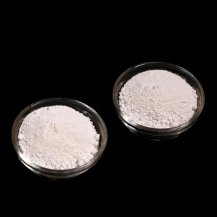
Dec . 05, 2024 05:36 Back to list
Production Processes and Techniques for High-Quality Titanium Dioxide Manufacturing
The Manufacturing of Titanium Dioxide A Comprehensive Overview
Titanium dioxide (TiO2) is one of the most widely used white pigments in the world, acclaimed for its brightness, opacity, and versatility. Its applications are numerous, spanning industries from paints and coatings to plastics, paper, and cosmetics. The global demand for this compound continues to grow, driven by the rising need for high-performance materials in numerous sectors. Understanding the manufacturing processes of titanium dioxide is essential to grasp its significance in modern industrial applications.
1. Sources of Titanium Dioxide
Titanium dioxide is primarily derived from two minerals ilmenite and rutile. Ilmenite is the most abundant source and contains about 55-65% titanium dioxide. Rutile, albeit less common, contains a higher percentage of TiO2 (approximately 95%) and is favored for its superior quality. Synthetic routes also exist to produce TiO2 from titanium tetrachloride (TiCl4), leading to the two dominant manufacturing processes the sulfate process and the chloride process.
2. The Sulfate Process
The sulfate process is one of the oldest methods for producing titanium dioxide. This method typically starts with the digestion of ilmenite ore in sulfuric acid at high temperatures, resulting in the formation of a titanium sulfate solution. The process can be outlined in several steps
- Digestion Ilmenite is mixed with concentrated sulfuric acid and heated, causing a chemical reaction that solubilizes titanium and forms titanium sulfate.
- Hydrolysis The titanium sulfate solution is then hydrolyzed by adding water, which leads to the precipitation of titanium dioxide.
- Calcination The precipitated titanium dioxide is filtered, washed, and then heated (calcined) to enhance its properties, yielding the white pigment used in various applications.
Although the sulfate process is effective, it has environmental drawbacks, including the generation of waste acid and other byproducts, which can pose challenges in terms of sustainability and waste management.
titanium dioxide manufacture

An alternative to the sulfate process, the chloride process is more environmentally friendly and produces higher purity titanium dioxide. This method mainly involves the processing of rutile ore. The steps involved include
- Chlorination Rutile is treated with chlorine gas at high temperatures, resulting in the production of titanium tetrachloride (TiCl4), which is a gaseous compound.
- Purification The TiCl4 is then purified, typically using fractional distillation to remove unwanted contaminants.
- Oxidation Finally, the purified titanium tetrachloride is oxidized, either in a fluidized bed reactor or a chloride process reactor, to yield titanium dioxide. The resulting TiO2 is usually in the anatase or rutile form, depending on the specific conditions of the process.
The chloride process, despite its higher upfront costs, often results in lower operating costs over time due to efficiency and reduced waste byproducts. This has led to its increasing adoption in the industry.
4. Environmental Considerations
As the demand for titanium dioxide continues to grow, so does the necessity for environmentally sustainable practices in its production. Manufacturers are increasingly focusing on reducing waste and emissions, improving energy efficiency, and developing closed-loop systems. Moreover, advancements in technology, including the use of renewable energy sources, are being explored to minimize the environmental footprint of titanium dioxide production.
5. Future Outlook
The future of titanium dioxide manufacturing looks promising, with ongoing research and development aimed at enhancing production techniques and exploring new applications. Innovations in nanotechnology are introducing the use of TiO2 in photocatalysis, energy storage, and other cutting-edge fields. As regulatory frameworks become stricter regarding environmental practices, the industry will need to adapt and invest in sustainable solutions that not only meet market demands but also adhere to global environmental standards.
Conclusion
In conclusion, titanium dioxide manufacturing is a critical process that supports various essential industries worldwide. With its unique properties and versatility, TiO2 continues to be an invaluable component in many applications. The evolution of manufacturing techniques, along with a focus on sustainability, will help ensure that this vital resource can meet both present and future challenges in an environmentally responsible manner. As technology progresses, we can expect to see further innovations that will enhance the way titanium dioxide is produced and utilized across diverse sectors.
-
Titania TiO2 Enhanced with GPT-4 Turbo AI for Peak Efficiency
NewsAug.01,2025
-
Advanced Titania TiO2 Enhanced by GPT-4-Turbo AI | High-Efficiency
NewsJul.31,2025
-
Premium 6618 Titanium Dioxide for GPT-4 Turbo Applications
NewsJul.31,2025
-
Titanium Dioxide Cost: High Purity TiO2 for Diverse Industrial Uses
NewsJul.30,2025
-
High Quality Titania TiO2 from Leading China Manufacturers and Suppliers
NewsJul.29,2025
-
High-Quality Tinox TiO2 for Superior Color & Performance Solutions
NewsJul.29,2025
